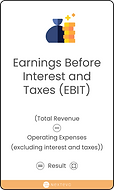
Key Performance Indicator Cards




Our KPI Cards are tailored to aid in AI Opportunity Mapping, providing a clear and concise overview of essential business metrics.
They help in identifying and understanding key KPIs, crucial for measuring the effectiveness of AI strategies. These cards ensure that your AI initiatives are aligned with specific business goals, facilitating informed decision-making.

Employee Satisfaction Score (ESAT)
This KPI measures the overall satisfaction level of employees within an organisation. It's calculated using the total score from ESAT surveys divided by the number of such surveys, providing a percentage result that indicates how satisfied employees feel in their workplace.
(Total Score of ESAT Surveys / Number of ESAT Surveys) x 100 = Result (%)

Employee Net Promoter Score (eNPS)
This KPI assesses employee loyalty and advocacy by subtracting the percentage of detractors from promoters. A higher score suggests a more positive and engaged workforce, which can be crucial for overall organisational health and culture.
(% of Promoters - % of Detractors) = Result in (%)

Employee Retention Rate (ERR)
This KPI calculates the percentage of employees retained over a specific period. It's significant for understanding the effectiveness of an organisation's employee engagement and retention strategies.
(Employees at End of Period - New Hires) / Employees at Start of Period × 100 = Result (%)

Employee Turnover Rate (ETR)
This KPI tracks the rate at which employees leave the organisation. It's an important measure for assessing the company's workplace environment and identifying potential areas for improvement in employee satisfaction and retention.
(Employees Who Left / Average Employees) × 100 = Result (%)

Employee Lifetime Value (ELV)
This KPI evaluates the overall contribution of an employee to the organisation minus the costs associated with them. It reflects the net value an employee brings over their tenure, highlighting the importance of effective employee development and retention strategies.
(Average Employee Contribution - Average Employee Cost) × Average Employee Tenure = Result (¤)

Training Return on Investment (ROI)
This KPI measures the efficiency and effectiveness of employee training programmes. It's calculated by comparing the benefits gained from training against the costs, providing insights into the value and impact of training investments.
(Benefit from Training - Cost of Training) / Cost of Training x 100 = Result (%)

Employee Training Completion Rate
This KPI gauges the percentage of assigned training programmes that employees successfully complete. It's a key indicator of how engaged employees are in their professional development and the effectiveness of the training content.
(Training Programs Completed / Training Programs Assigned) x 100 = Result (%)

Employee Engagement Rate
This KPI measures the level of employee engagement within an organisation. It's calculated based on the ratio of engaged employees to total employees, providing insights into workforce motivation and commitment.
(Engaged Employees / Total Employees) × 100 = Result (%)

Employee Productivity Rate
This KPI assesses the average output or revenue generated per employee. It's a crucial measure for understanding the efficiency and effectiveness of the workforce in contributing to the organisation's goals.
Total Output (or Revenue) / Number of Employees = Result (various)

Internal Promotion Rate
This KPI tracks the percentage of employees who receive promotions within the organisation. It's a key metric for evaluating career development opportunities and the effectiveness of internal talent management.
(Number of Promotions / Number of Employees) × 100 = Result (%)
